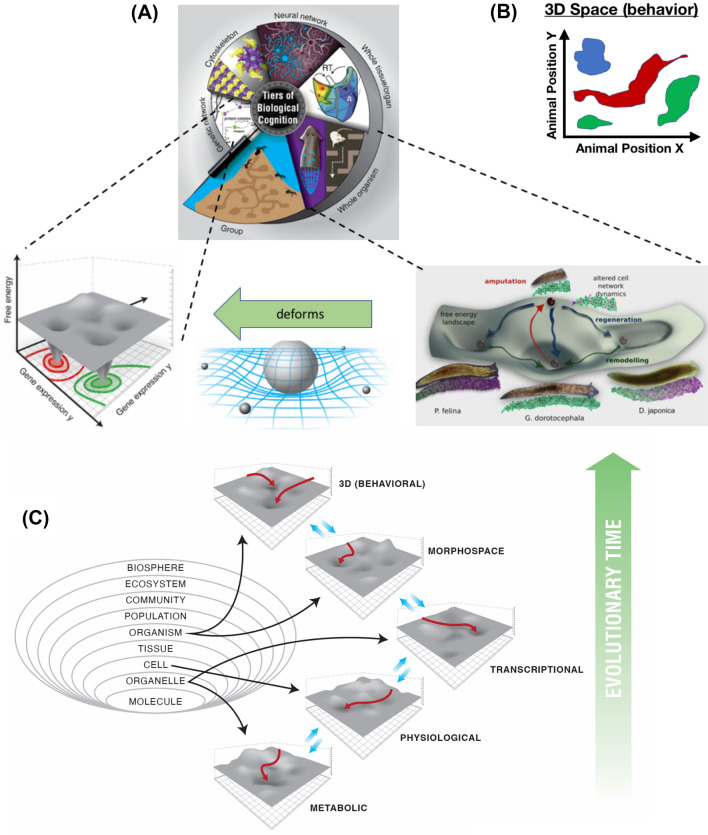Fig. 2.
Multiscale competency architecture operates across problem spaces. A Biological systems are nested dolls in which molecular networks give rise to subcellular components, such as cytoskeletal networks, which give rise to cells, tissues, organs, organisms, and swarms. This multiscale architecture is not only structural, but rather functional: each level solves problems (with some degree of competency) in its own action space. Each level deforms the energy landscape for the levels below and above, influencing those components to do things they would otherwise not do. For example, when traversing the morphospace of different planarian head shapes, the bioelectric circuit controlling head morphogenesis alters the space of gene expression that is necessary to implement the specific anatomical outcomes. B Familiar (conventional) behavior is navigation of a three-dimensional space, in which animal positions move to optimize certain reward functions. Although the human visual and cognitive repertoire is most accustomed to recognizing competency of typical (mid-sized, animal) agents navigating three-dimensional spaces, this deep concept integrates ideas across such wide-ranging fields as autonomous robotics (AI), evolutionary fitness landscapes, morphospaces, and cognitive behavioral studies. C There are in fact many problem spaces in which biological systems operate. Evolution progressively pivoted existing and novel mechanisms across problem spaces, to enable adaptive navigation toward specific goal states in metabolic, physiological, transcriptional, morphological, and ultimately behavioral space. All images created by Jeremy Guay of Peregrine Creative, except for the planaria image of panel A, which was created by Alexis Pietak. Used with permission; A,B taken with permission from (Levin 2022)

